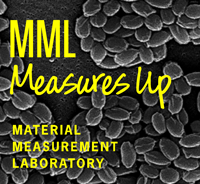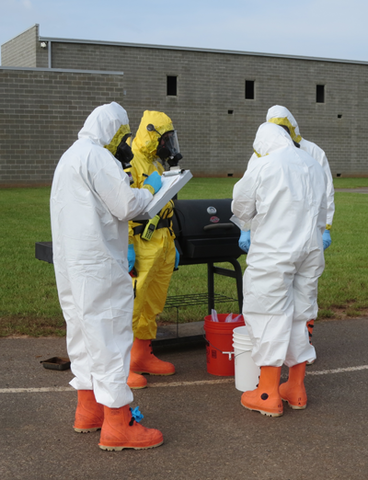
NIST contributes to public safety with materials that increase the confidence of first responders to detect biothreats in the field.
NIST’s Material Measurement Lab developed a microbe that members of law enforcement, the military, and public health labs can use to test their equipment and protocols for detecting biological weapons. Federal law enforcement officers have responded to more than 40,000 reports of suspicious powders–nearly one per day—since 2001. Tests on suspect powders can take hours or weeks, sometimes shutting down public services or requiring evacuations until results are confirmed. To avoid unnecessary disruptions and keep people safe from genuine threats, first responders need to rapidly detect suspicious powders in the field, but a lack of consistent protocols and variations in test results have dissuaded the community from relying on field testing to make decisions.
The yeast could “serve as a viable resource for the first phase of training programs” and “be used periodically as a ‘confidence checker’ to allow first responders, under controlled conditions, to review or practice their skills.”
- Association of Public Health Laboratories Preparedness and Response Committee

We created a candidate reference material based on genetically engineered yeast that is both appropriately challenging to detection equipment and safe. The yeast material was used in a successful training exercise where nearly a dozen local, state, and federal teams demonstrated their ability to correctly sample and assess biological material in the field. As further proof of concept, we conducted an interlaboratory comparison study with five public health laboratories, one mobile laboratory, and one in-house laboratory, all of which detected the yeast.
We modified the yeast to contain a genetic sequence from a microbe that lives only on deep sea vents, giving responders a unique DNA signature to look for as they train and challenge their detection technologies. Because it is so unlike any real biothreat, any residue of the yeast stand-in doesn’t convey a risk of causing false positive tests during a response to a genuine suspicious powder. It can also be used to assess any process that detects DNA, such as those used in food safety and environmental monitoring. In addition to the development of this candidate reference material, we contribute to protocols for collecting powder samples and, working with ASTM, standards for biothreat field response.
100% of participants in a simulated suspected biothreat exercise detected the yeast material

